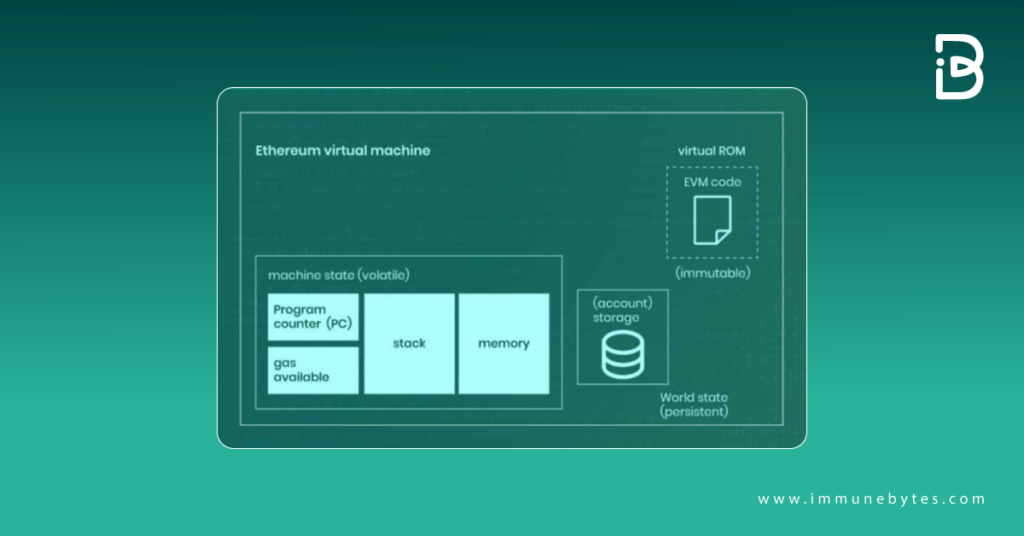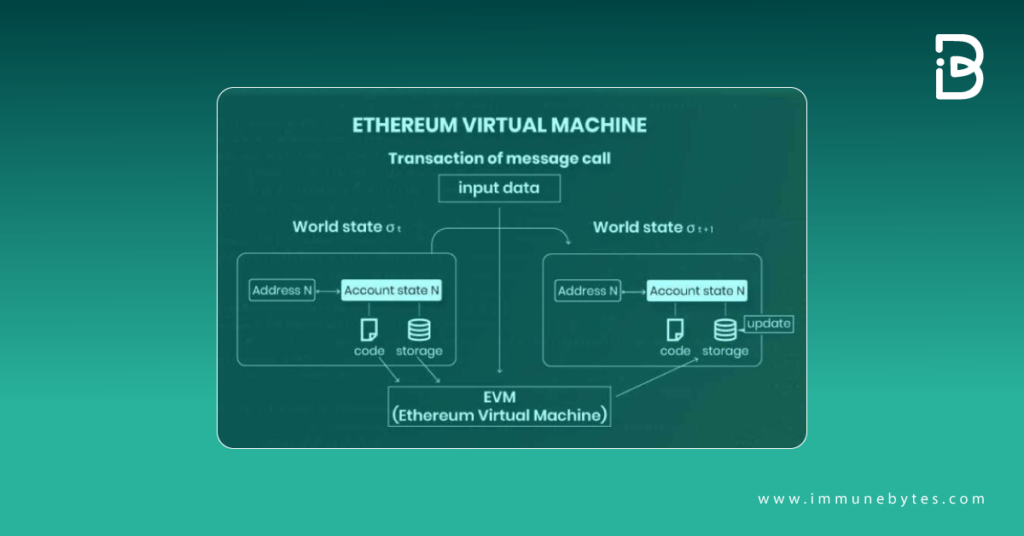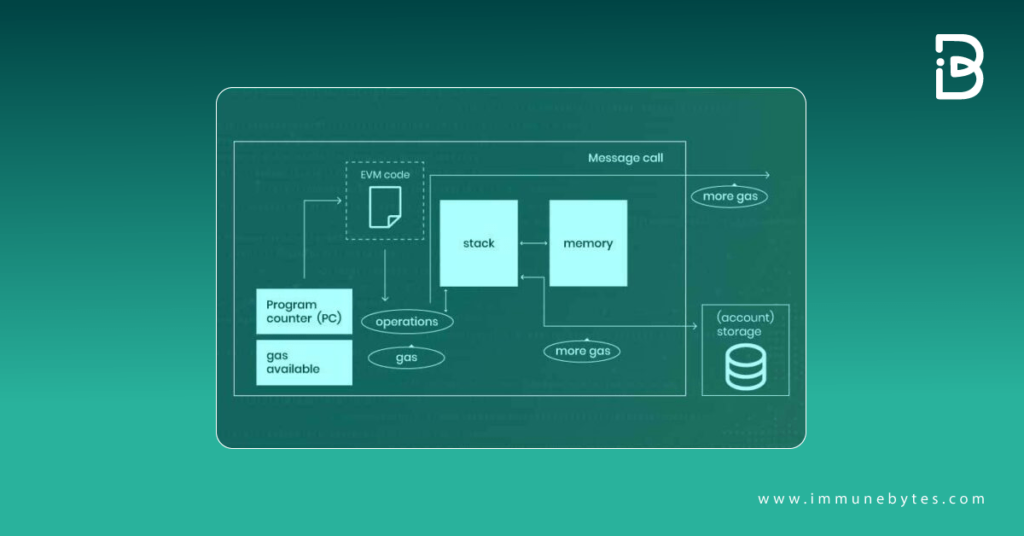The arrival of Ethereum into the blockchain space has actually transformed its functioning along with expanding use cases of the technology. Ethereum calls itself the blockchain designed for smart contracts, creating applications for a variety of uses, including gaming, DeFi, DEX, and many more.
All this is a reality because of the Ethereum Virtual Machine or EVM, which is arguably the most significant invention of recent years. EVM is Ethereum’s computational engine that handles smart contract execution and deployment.
This blog will delve into the working of the Ethereum Virtual machine, along with its pros and cons.
Let’s begin!
What is the Ethereum Virtual Machine in Blockchain?
Table of Contents
As the name indicates, a virtual machine is related to the virtualization of the actual computer. The EVM blockchain is designed to be the infrastructure for smart contracts based on Ethereum. Initially, built to avoid the Denial-of-service attacks that pose a grave threat to the crypto space then.

Technically speaking, EVM is a stack-based, quasi-turing-complete state virtual machine.
Turing complete signifies a system that, given enough time, memory, and instructions, can solve any computation function irrespective of its complexity.
EVM is quasi-turning, completely attributable to the fact that the amount of gas allocated for a given smart contract implementation restricts all execution operations to a finite number of computational steps.
Gas indicates the fees required for any or every transaction on the blockchain network.
EVM is also developing its own programming language called the ? Ethereum Bytecode.?
Recommended: Ethereum Security Audit
BYTECODE
EVM performs its own bytecode instructions after translating high-level language into bytecode, much like a central processing unit. Here, Solidity is the higher-level programming language utilized for Ethereum.
The following operations are available through bytecode operations or the EVM operation set:
- execution-related queries
- Storage access, memory, and stack (Probably the most important set of operations)
- Bitwise logical operations and arithmetic
- Calling, logging, and other operators
- Control actions for flows
An opcode is converted into a Bytecode for effective storage, where each opcode is given a byte.
Opcode here represents a low-level language to be understood by EVM, as it cannot directly execute Solidity code.
Following are the available opcodes of the Ethereum Virtual Machine:
- Arithmetic Operations: ADD, MUL, SUB, DIV, SDIV, and more.
- Stack Operations (including stack, memory, and storage management instructions): POP, MLOAD, MSTORE, SLOAD, SSTORE, and more.
- Process Flow Operations: STOP, JUMP, JUMPI, and more.
- System Operations: LOGx, CREATE, CALL, CALLCODE, and more.
- Logic Operations: LT, GT, SLT, SGT,and more
- Environmental Operations: GAS, ADDRESS, BALANCE, ORIGIN, CALLER, CALLVALUE, and more.
- Block Operations: BLOCKHASH, COINBASE, TIMESTAMP, NUMBER, DIFFICULTY, and GASLIMIT.
Who Created the Ethereum Virtual Machine?
Vitalik Buterin and his team built the EVM smart contract environment to realize the interaction of smart contracts amongst themselves and the network.
Unlike suspicion surrounding the developing community of Bitcoin, the development of Ethereum has been transparent. Bringing in blockchain 2.0, Vitalik Buterin and others combine the force of blockchain with a smart contract giving rise to Ethereum and the EVM blockchain ecosystem.

Fig: A schematic representing the transaction on Ethereum via EVM.
Virtual machines are devices that try to abstract at a higher level than your typical operating system. Virtual machines are built on top of the standard operating systems, unlike Windows or iOS, so they can perform similarly to a physical computer.
A virtual machine is a piece of software that isolates a computer’s actual parts and operating system to simulate how it would operate. This means that multiple virtual computers, or, to be more accurate, virtual machines, can run on a single physical computer.
How Big is the Ethereum Virtual Machine?
After Ethereum’s commencement into the blockchain space, the next step was to develop an environment where all of these smart contracts could live and interact. The outcome was the Virtual Machine crypto, which has a state that is converted into byte code and loaded into Ethereum, like the smart contracts created and placed into it.
Ethereum Virtual Machine (EVM), an Ethereum computing engine, functions as a decentralized computer executing millions of applications. It serves as the foundation for Ethereum’s whole administrative system. It is regarded as the component of Ethereum that manages the execution and deployment of smart contracts.
EVM is one of the most resilient and intelligent networks available today. Every transaction that EVM executes on the network requires a cost calculated in terms of GAS.

Actually, the cap on the gas cost makes EVM quasi-turning. It can run any program you feed it as long as it completes execution within a predetermined number of computations.
In Ethereum, this limit isn’t static; you can pay to raise it as high as you’d like (this is the “block gas limit”), and everyone can agree to raise it gradually over time. The amount of gas that can be used at once is limited, and transactions that use too much gas while executing are halted.
Wrapping Up
Ethereum creators had a vision of bringing in a world computer, part of which was possible due to the inception of EVM. Now, as the buzz around Ethereum 2.0 is going on, we have an Ethereum machine successor to join, eWASM (or Ethereum web assembly). Currently, at the developmental stage, eWASM will redesign the Ethereum smart contract execution layer utilizing a deterministic set of webassembly.
Additional Resources
- EIP 1559
- ETHEREUM SMART CONTRACT AUDIT: PROS & CONS
- TRANSFER ETH FROM ETHEREUM MAINNET TO POLYGON MAINNET
- ETHEREUM AFTER ETHEREUM 2.0

